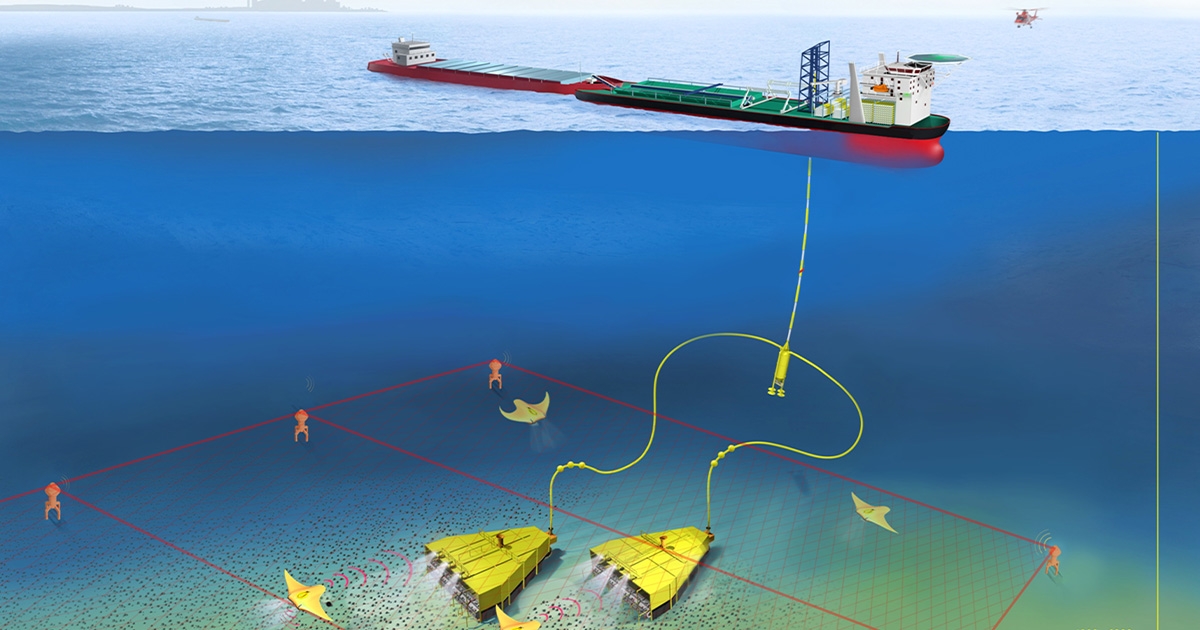The Future of Smart Robotics and Data Networks for Advancing the Ocean Industries

The speed of innovation is faster than ever, and marine industries are no exception to the global trends. In fact, they may even be among the fastest-evolving tech sectors on the planet. New digital technology drives new quality and quantity for data collection and analytics, the internet of things, machine learning and artificial intelligence, and advanced autonomous robotics.
In order to stay competitive, companies in the ocean industry heavily invest in research and development in order to bring new solutions to the market.
At EvoLogics, collaborating with national and international R&D projects has been an integral part of the company's DNA since its very beginning over 20 years ago. Some technologies matured to reach the market, while other developments became a foundation for the work that is still ongoing.
With product ranges covering technology for underwater communication, positioning and networking, and smart robots for surveying and monitoring, we develop the frontier of application scenarios with customers and partners from industry and science.
Where do we observe a growing demand? Definitely in environmental monitoring, where tools for observation and data analysis help understand the impact of industrial activity. They go hand in hand with climate research to investigate global processes and climate change. Other rising demands are offshore wind power and other alternative energy sources, offshore oil and gas production, as well as a resurgence of interest in deep-sea mining. There is also a growing need for security solutions that monitor, detect, and alert about surface and underwater traffic at harbors and critical maritime infrastructure.
Building around—and driven by—an ongoing expansion of functionality and overall effectiveness of subsea equipment, we observe a range of general industry trends.
SCALING TECHNOLOGIES
First is a need for more quantity of technology. As more and more tasks must be accomplished underwater, the mission complexity grows, but so does the sheer scale of operations. Advancing the functionality comes along with an increased number of devices that comprise the hardware architecture of today’s underwater missions.
The growing complexity of the missions entails the higher data volumes that need to be collected, processed, and analyzed in a fast and effective manner. Scaling up the vessels, crews and logistic efforts would drive up both time and cost. The future needs more compact and smart solutions - this is another trend that persists over the years. The time, cost, logistics, and safety efforts for maritime missions can be significantly reduced with smaller vessels and fewer personnel.
SUPPORTING AUTOMATION
Complex missions also require faster data processing, interconnectivity, and decision-making capabilities to automate most tasks. Robotics should decrease the number of operators, and the operator’s efforts, with synergy and self-controlled coordination.
Throughout our work with customers and R&D partners, the communication and positioning networks of EvoLogics underwater acoustic modems are in high demand. Current tasks involve coordinating data networks of multiple nodes, with some projects requiring over 200+ underwater devices to communicate with each other—comprising a network of Autonomous Underwater Vehicles (AUVs), Remotely Operated Vehicles (ROVs), and stationary nodes.
Underwater positioning needs to support autonomously operating vehicles and allow for flexible functionality. Modern needs call for accurate positioning and coordinated, complex swarm behavior of UUVs that execute their missions autonomously.
The communication and positioning methods evolve with ongoing R&D efforts. We see the future in hybrid network-aided positioning methods that combine the accuracy of long-baseline solutions with the low system complexity of USBL.
Multi-modal communication is another rising trend. EU-funded MarTERA UNDINA project is an example: here, EvoLogics and project partners are working on underwater modems that operate over acoustics, optics, and magnetic induction to ensure connectivity over a wide range of distances and subsea conditions. Such wireless networks can exhibit better scalability, maintainability, and environmental impact.
FUTURE ROBOTIC SYSTEMS
The future of marine robotics brings missions with multiple moving parts, more accurate and specific data, larger data volumes, more interoperability, and, last but not least, more security. Intelligent robotics should reduce the logistics cost and effort, reduce the number of operators, and mitigate operator fatigue. Here, self-coordinated UUV swarms are set to be the key with innovations in artificial intelligence, object recognition, collision detection, and advanced swarm behavior.
Onboard data processing has become a must for reducing the overwhelming data volumes that need to be transferred, processed, and analyzed.
Growing demand for more data favors multi-sensor payload configurations. Here, integrated data processing avoids overloaded data streams through distributed computing. Advanced methods for data fusion merge values from multiple sensor inputs into a homogeneous structure.
DEEPSEA PROTECTION
One of EvoLogics’ ongoing R&D efforts is DeepSea Protection, a national project of eight partners funded by the German Federal Ministry for Economic Affairs and Climate Action. It provides a great example of a complex future mission with a highly demanding infrastructure: a deep-sea mining operation.
Safe industrial mining of natural resources on the seabed comes with enormous volumes of data collected at 3+ km depths: surveys of geology and topography, operations support, and environmental monitoring. For such an operation, the new technologies enable a multi-sensor network to simultaneously control remote deep-sea operations and monitor a wide range of environmental parameters to make sure the production activities remain ecologically safe.
By these means, smart new solutions come hand in hand with sophisticated systems for environmental monitoring. Novel autonomous technologies enable informed decisions for efficient operations that are safe for both humans and nature.
For more information, visit: www.evologics.de.
This feature originally appeared in Ocean News & Technology's Magazine December 2022 edition. To read more, access the magazine here.

